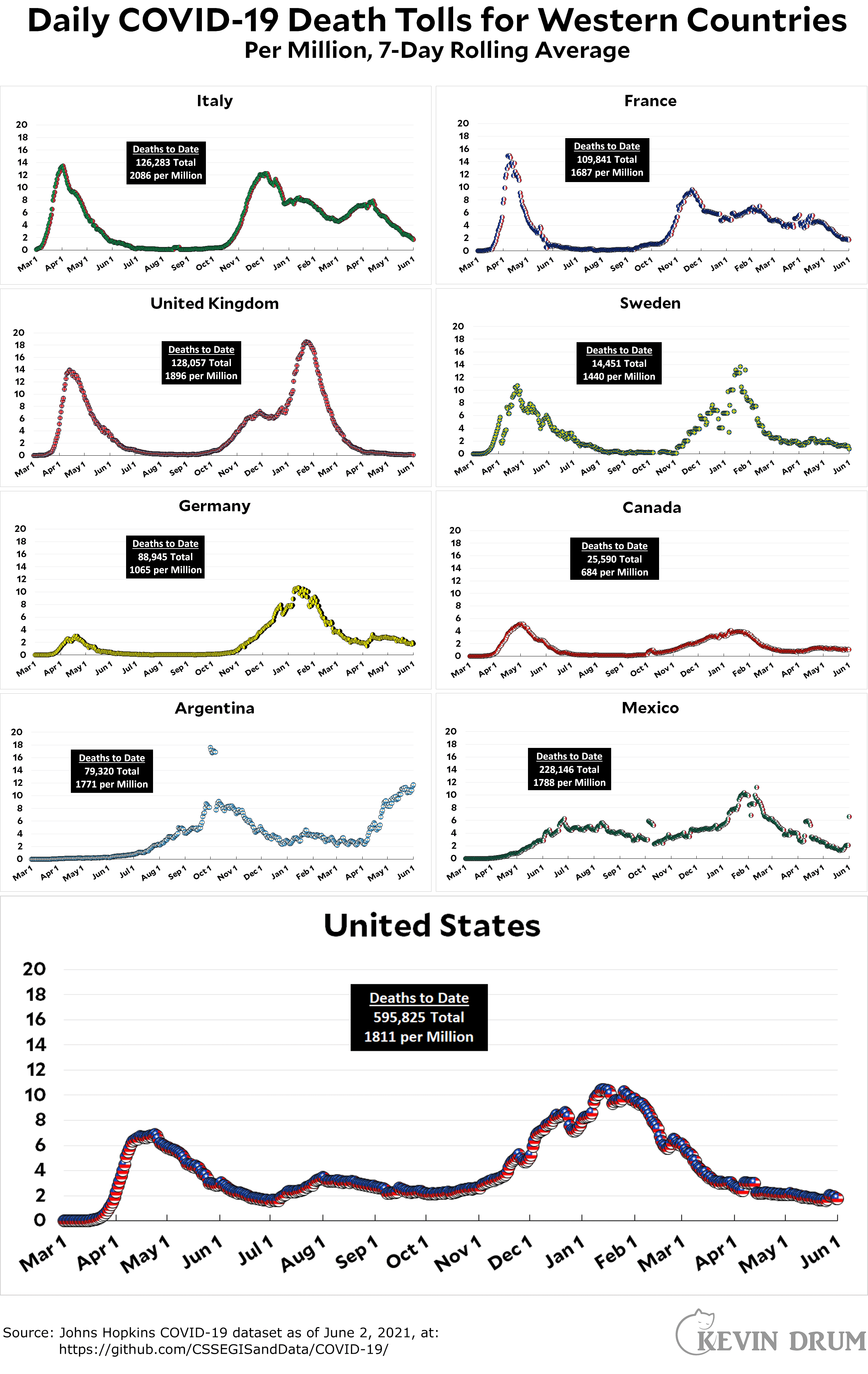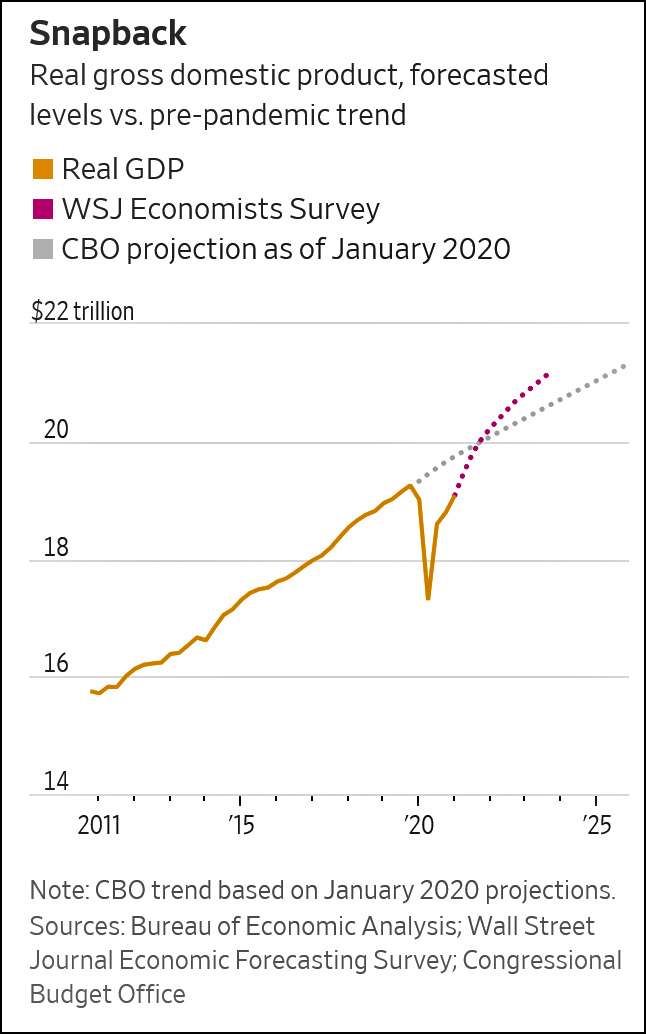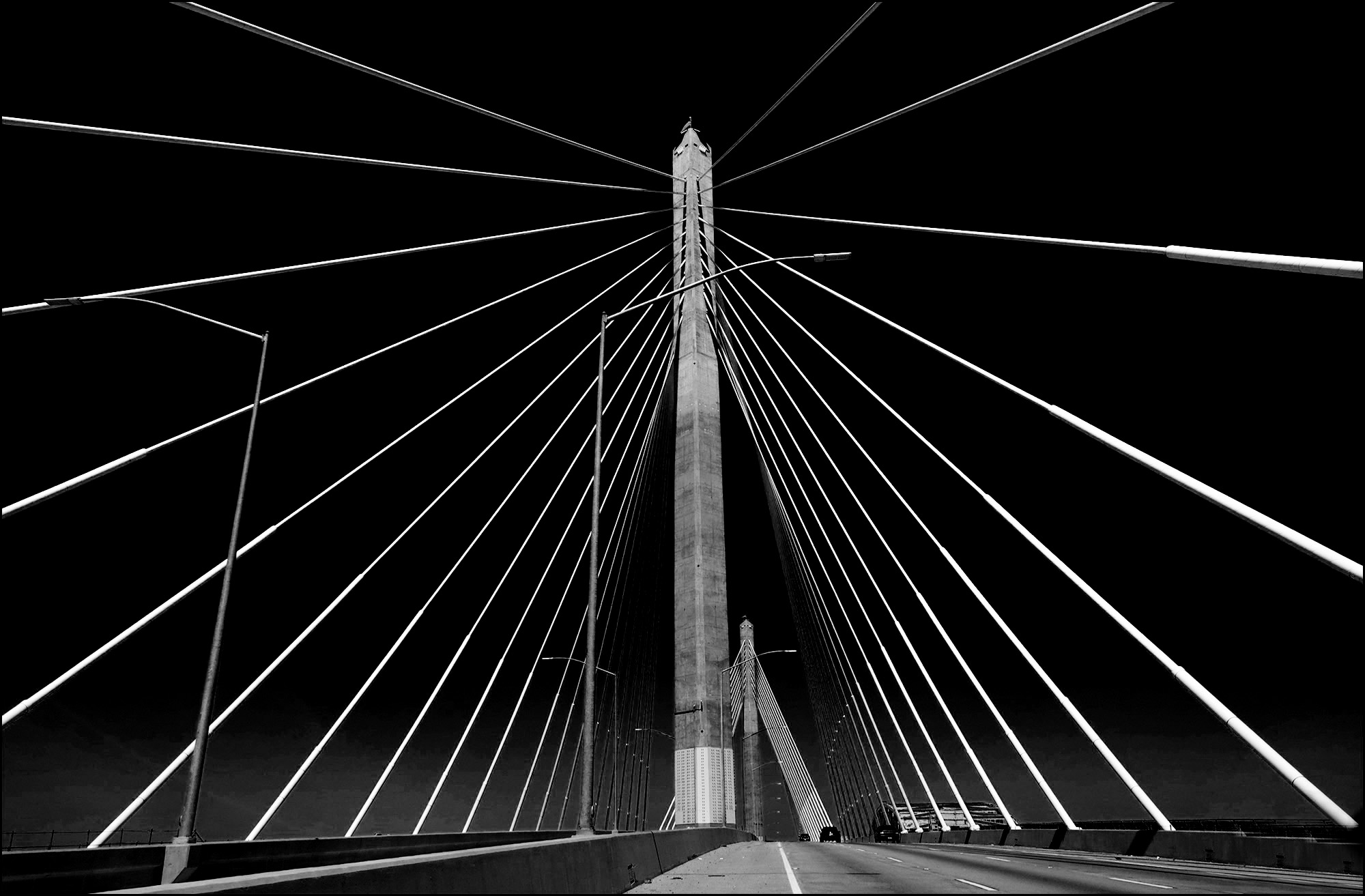Joe Biden, apparently showing that his desire for a bipartisan infrastructure bill is genuine, has proposed a huge compromise that not only cuts new spending in half, but does it without raising the corporate tax rate:
President Biden signaled at a private meeting on Wednesday that he would be open to significant revisions on the size of his infrastructure package and how it would be paid for in order win Republican backing, outlining a plan for about $1 trillion in new spending financed through tax changes that do not appear to raise the top corporate rate.
....At issue is the component of Biden’s original infrastructure plan that would raise the corporate tax rate from 21 percent to 28 percent....In its place, Biden emphasized a different part of his proposal, which would amount to a new, minimum corporate tax of 15 percent.
Biden has cut the total amount of his proposal by more than half, and plans to finance it solely with a minimum tax rate on large corporations. He is, basically, calling Republicans' bluff. This is about as big a compromise as any minority party could reasonably expect.
Will ten or a dozen Republicans sign up, so that this can pass via regular order? Or will Mitch McConnell, as yet another "personal favor," lobby his fellow Republicans to deny Biden anything that might be interpreted as a bipartisan victory?
I'd guess the latter, of course, but I'm a cynic. We should know shortly.


 If we're suffering a bit right now from spot shortages and labor tightness, it's only because the economy is growing so fast that it's hard for everyone to keep up. The Wall Street Journal writes today about
If we're suffering a bit right now from spot shortages and labor tightness, it's only because the economy is growing so fast that it's hard for everyone to keep up. The Wall Street Journal writes today about 








